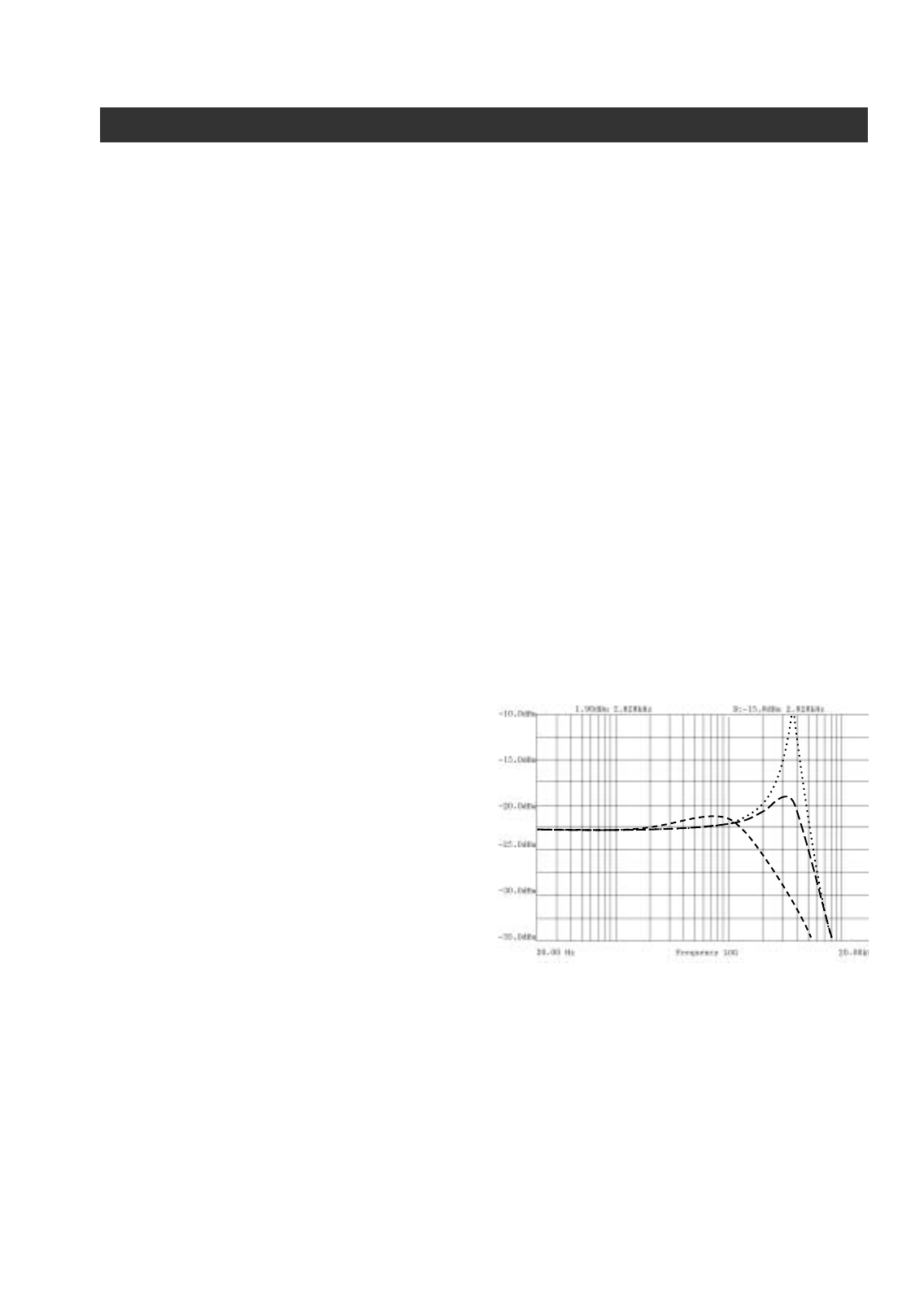
19
Pro Tube IV
CHANNEL 1 - TUBE
This channel is equipped with two tubes. One
preamp tube is always included within the signal
flow.
2ND STAGE switch adds one output stage tube
into the circuit. This feature offers the choice
between a so called hybrid amplifier (tube preamp
with transistor power amp) and the sound of an all
tube amplifier head.
CRUNCH control adjusts the tube pre-
amplification.
TONE control sets the basic sound characteristics
(frequency control 300 Hz - 14 kHz, see below).
CONTOUR switch boosts bass and treble at once.
LOW B/C 3-way switch for the boost/flat/cut of
sub-bass frequencies. In boost position (red LED)
the bottom-end is boosted, in cut position (yellow
LED) it remains unmodified, but the deep-mids
region is attenuated to obtain a clearer sound
(chords, tapping, harmonics, etc.).
MID B/C 3-way switch for the boost/flat*/cut of
the frequency determined via TONE control. In
boost position (red LED) this frequency is boosted,
in cut position (yellow LED) it is attenuated.
* The respective frequency will be slightly boosted
when the switch is centered (flat). All boosts and
attenuations are less intense in deeper frequency
ranges than in higher spectra (300 Hz +6/+12 dB,
14 kHz +15/+20 dB, flat/boost).
HIGH B/C 3-way switch to boost/flat/cut high
sound attributes. In boost position (red LED)
treble is boosted (fixed preset), in cut position
(yellow LED) the TONE control works as a low-
pass-filter, means that frequencies higher than the
TONE control setting are eliminated. Moreover
the MID-boosts are softened by about 5 dB.
As you can see, the three 3-way switches and
TONE control act in a very complex way.
Therefore I would like to introduce some remarks
and suggestions regarding sound adjustments:
1. Simulation of different pickup
characteristics:
Each pickup has a peak in its resonance frequency
in excess of which no treble can be transmitted.
The main distinction in sound characteristics
between different pickups is that this frequency is
located elsewhere depending on pickup types. This
is exactly what you can simulate in switch positions
MID boost and HIGH cut by shifting the
resonance frequency with the TONE control
(12 o'clock until full clockwise position). This
requires that the resonance frequency of your bass
pickups lies beyond that of the desired simulation.
Furthermore this adjustment allows to boost
highest trebles that your bass can produce, by
cutting even higher pitches so as to diminish
unnecessary noise.
2. Speaker Emulator (when CRUNCH is driven
highly until distortion):
In case you have adjusted a distorted sound with
the CRUNCH control and use a loudspeaker
cabinet with tweeter (or send the sound via the
DI OUTs to a mixer), you should eliminate high-
pitched frequencies with HIGH cut, as they can be
very unpleasant for the human ear. When
MID boost is activated at the same time, the sound
will be more aggressive, whereas the simultaneous
use of MID cut results in a smooth but however
deeper cut of treble (see graph).
If necessary you can turn the TONE control
further clockwise.
3. Semi-parametric EQ:
When the MID 3-way switch is set to boost, flat
(center position, slight boost) or cut, you can pre-
adjust the basic timbre of your sound with the
TONE control like with a semi-parametric filter.
As already mentioned, the degree of boosts or cuts
depends on frequency ranges. These have been
determined so as to obtain efficient results by quick
adjustment.












